
An Armenian woman in national costume poses for Prokudin-Gorskii on a hillside near Artvin (in present day Turkey), circa 1910.
The Sergei Mikhailovich Prokudin-Gorskii Collection features color photographic surveys of the vast Russian Empire made between ca. 1905 and 1915.
In those years, photographer Prokudin-Gorskii (1863-1944) undertook a photographic survey of the Russian Empire with the support of Tsar Nicholas II.
He used a specialized camera to capture three black and white images in fairly quick succession, using red, green, and blue filters, allowing them to later be recombined and projected with filtered lanterns to show near true color images.
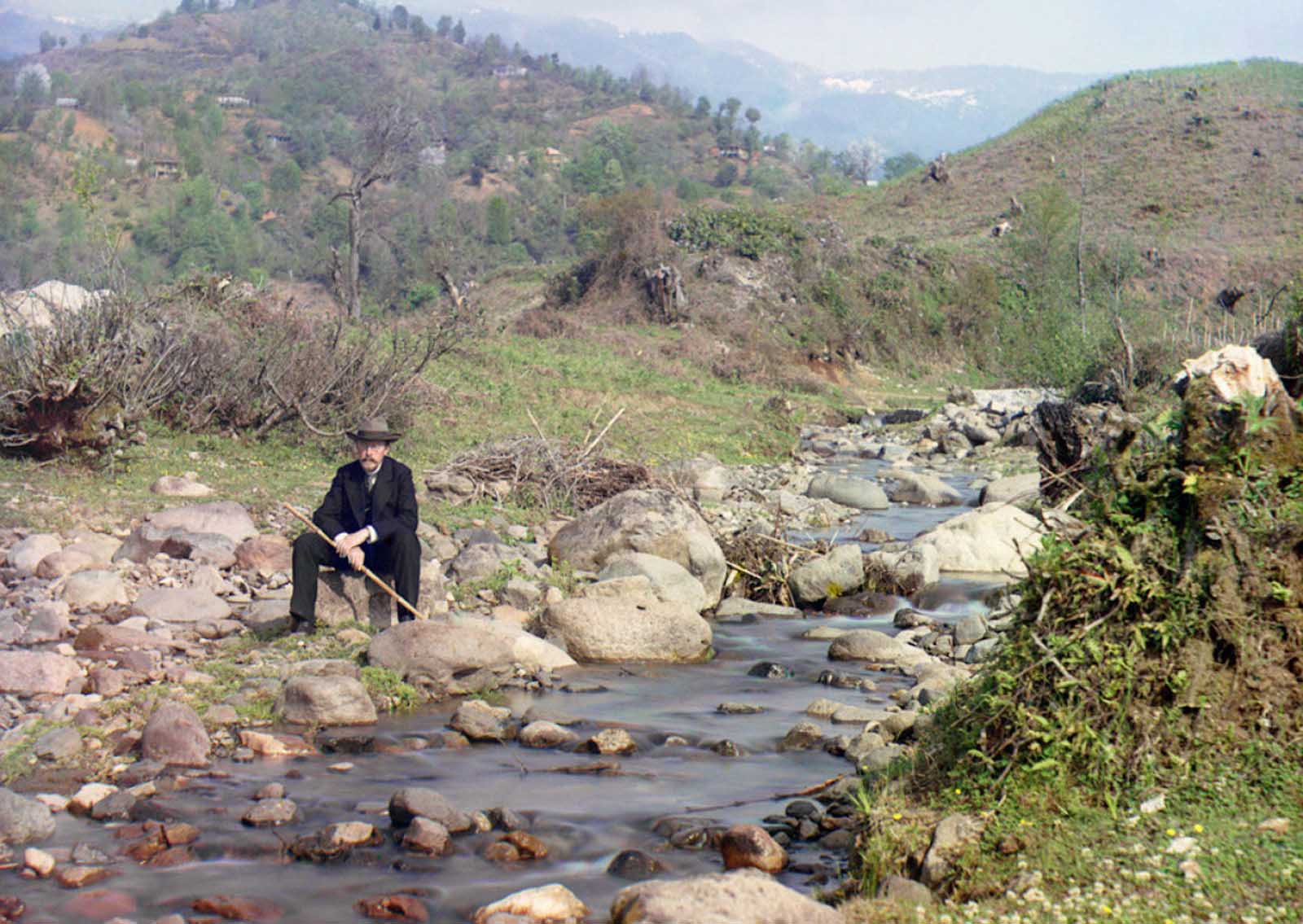
Self-portrait on the Karolitskhali River, ca. 1910. Prokudin-Gorskii in suit and hat, seated on a rock beside the Karolitskhali River, in the Caucasus Mountains near the seaport of Batumi on the eastern coast of the Black Sea.
The high quality of the images, combined with the bright colors, make it difficult for viewers to believe that they are looking 100 years back in time – when these photographs were taken, neither the Russian Revolution nor World War I had yet begun.
Around 1905, Prokudin-Gorsky envisioned and formulated a plan to use the emerging technological advances that had been made in color photography to document the Russian Empire systematically.
Through such an ambitious project, his ultimate goal was to educate the schoolchildren of Russia with his “optical color projections” of the vast and diverse history, culture, and modernization of the empire.

Molding of an artistic casting (Kasli Iron Works), 1910. From the album “Views in the Ural Mountains, a survey of an industrial area, Russian Empire”.
Outfitted with a specially equipped railroad-car darkroom provided by Tsar Nicholas II and in possession of two permits that granted him access to restricted areas and cooperation from the empire’s bureaucracy, Prokudin-Gorsky documented the Russian Empire around 1909 through 1915. He conducted many illustrated lectures of his work.
His photographs offer a vivid portrait of a lost world—the Russian Empire on the eve of World War I and the coming Russian Revolution.
His subjects ranged from the medieval churches and monasteries of old Russia to the railroads and factories of an emerging industrial power, to the daily life and work of Russia’s diverse population.
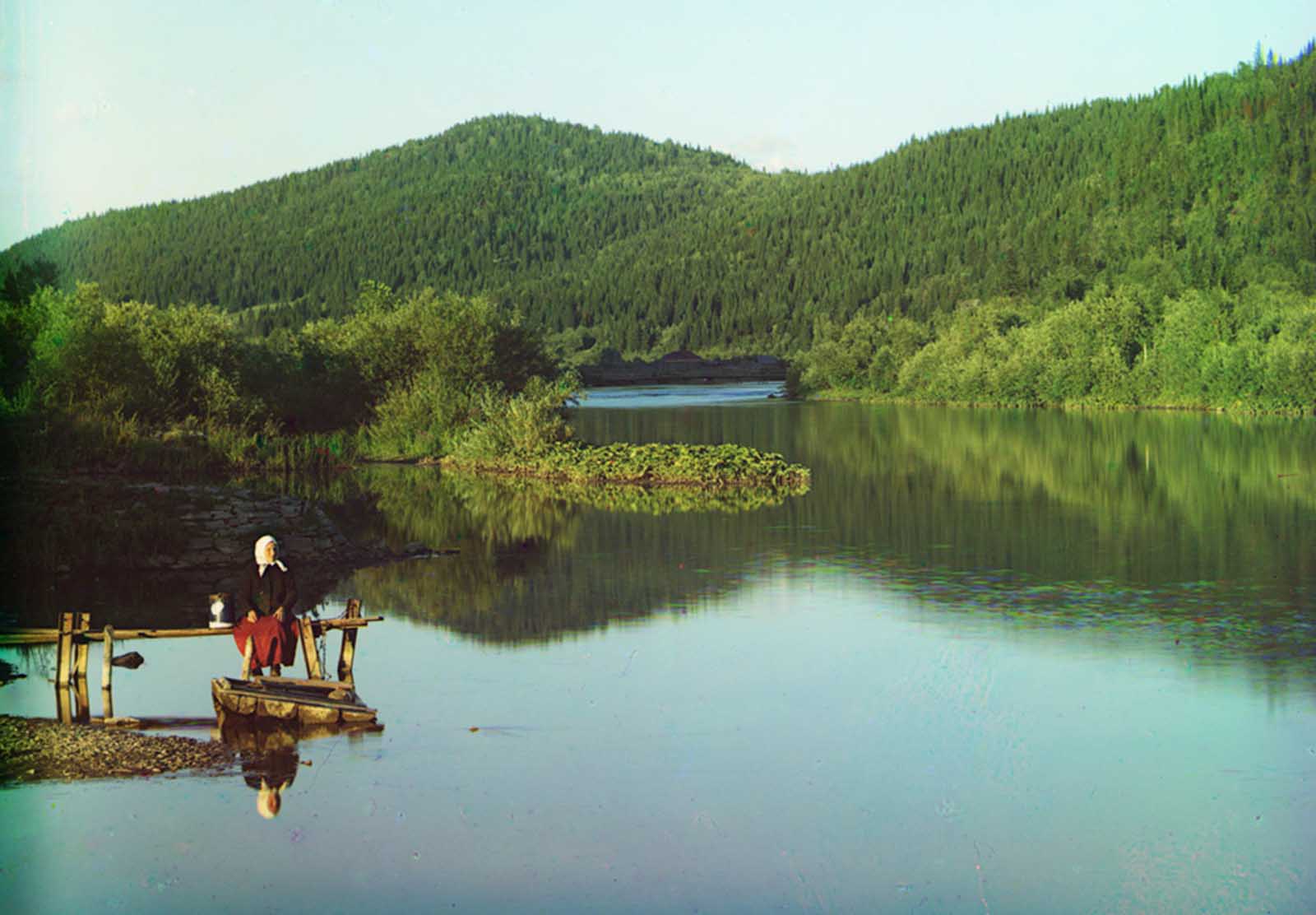
A woman is seated in a calm spot on the Sim River, part of the Volga watershed in 1910.
It has been estimated from Prokudin-Gorsky’s personal inventory that before leaving Russia, he had about 3500 negatives.
Upon leaving the country and exporting all his photographic material, about half of the photos were confiscated by Russian authorities for containing material that seemed to be strategically sensitive for war-time Russia.
According to Prokudin-Gorsky’s notes, the photos left behind were not of interest to the general public.
Some of Prokudin-Gorsky’s negatives were given away, and some he hid on his departure. Outside the Library of Congress collection, none has yet been found.

A chapel sits on the site where the city of Belozersk was founded in ancient times, photographed in 1909.
By Prokudin-Gorsky’s death, the tsar and his family had long since been executed during the Russian Revolution, and Communist rule had been established over what was once the Russian Empire.
The surviving boxes of photo albums and fragile glass plates the negatives were recorded on were finally stored in the basement of a Parisian apartment building, and the family was worried about them getting damaged.
The United States Library of Congress purchased the material from Prokudin-Gorsky’s heirs in 1948 for $3500–$5000 on the initiative of a researcher inquiring into their whereabouts.
The library counted 1,902 negatives and 710 album prints without corresponding negatives in the collection.

View of Tiflis (Tbilisi), Georgia from the grounds of Saint David Church, ca. 1910.
The three-color principle: The method of color photography used by Prokudin-Gorsky was first suggested by James Clerk Maxwell in 1855 and demonstrated in 1861, but good results were not possible with the photographic materials available at that time.
In imitation of the way a normal human eye senses color, the visible spectrum of colors was divided into three channels of information by capturing it in the form of three black-and-white photographs, one taken through a red filter, one through a green filter, and one through a blue filter.
The resulting three photographs could either be projected through filters of the same colors and exactly superimposed on a screen, synthesizing the original range of color additively.

Isfandiyar Jurji Bahadur, Khan of the Russian protectorate of Khorezm (Khiva, now a part of modern Uzbekistan), full-length portrait, seated outdoors, ca. 1910.
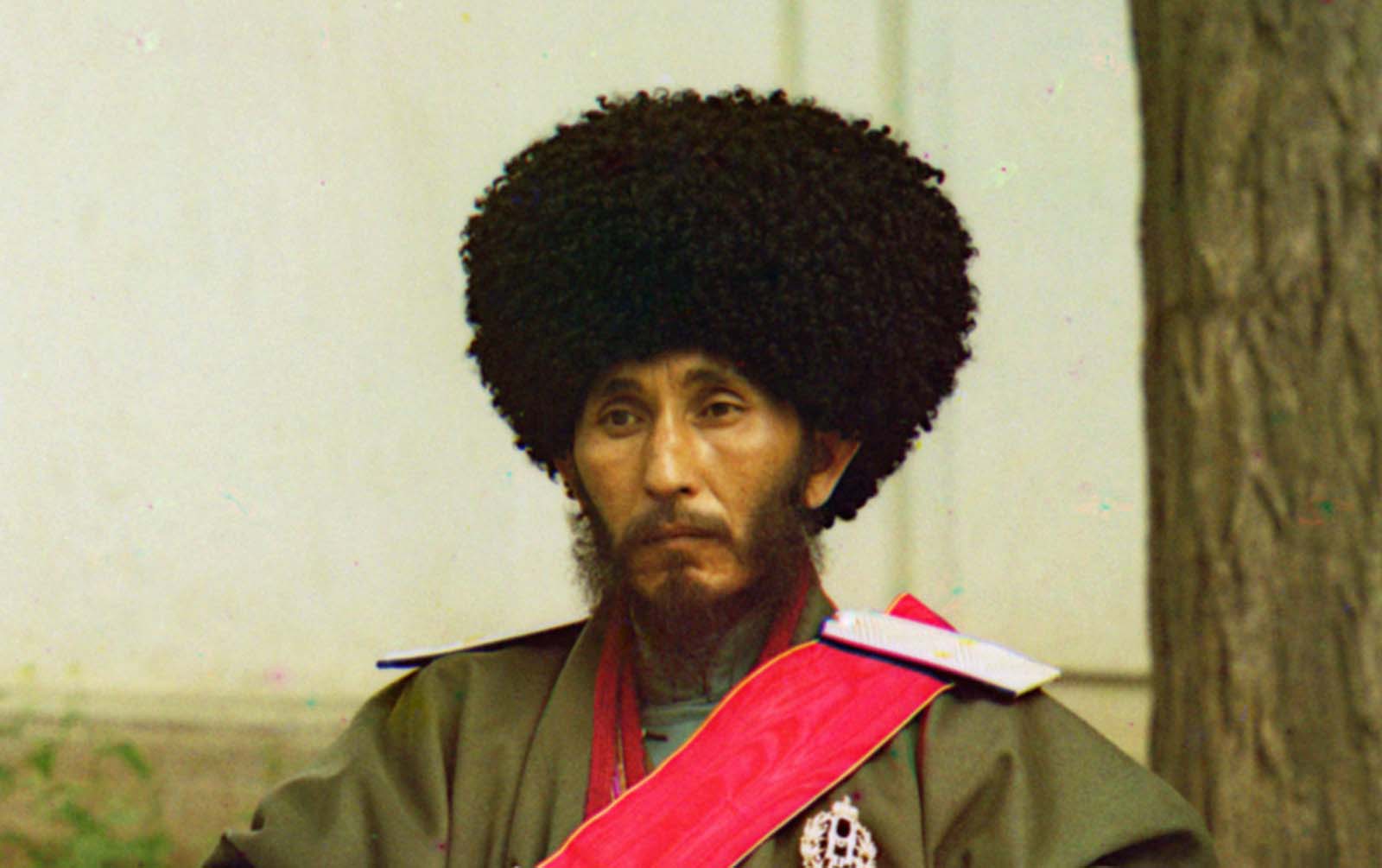
A closer detailed view of Isfandiyar, Khan of the Russian protectorate of Khorezm. This photo would have been taken near the start of his reign in 1910, when he was 39 years old. He ruled Khorezm until his death in 1918.
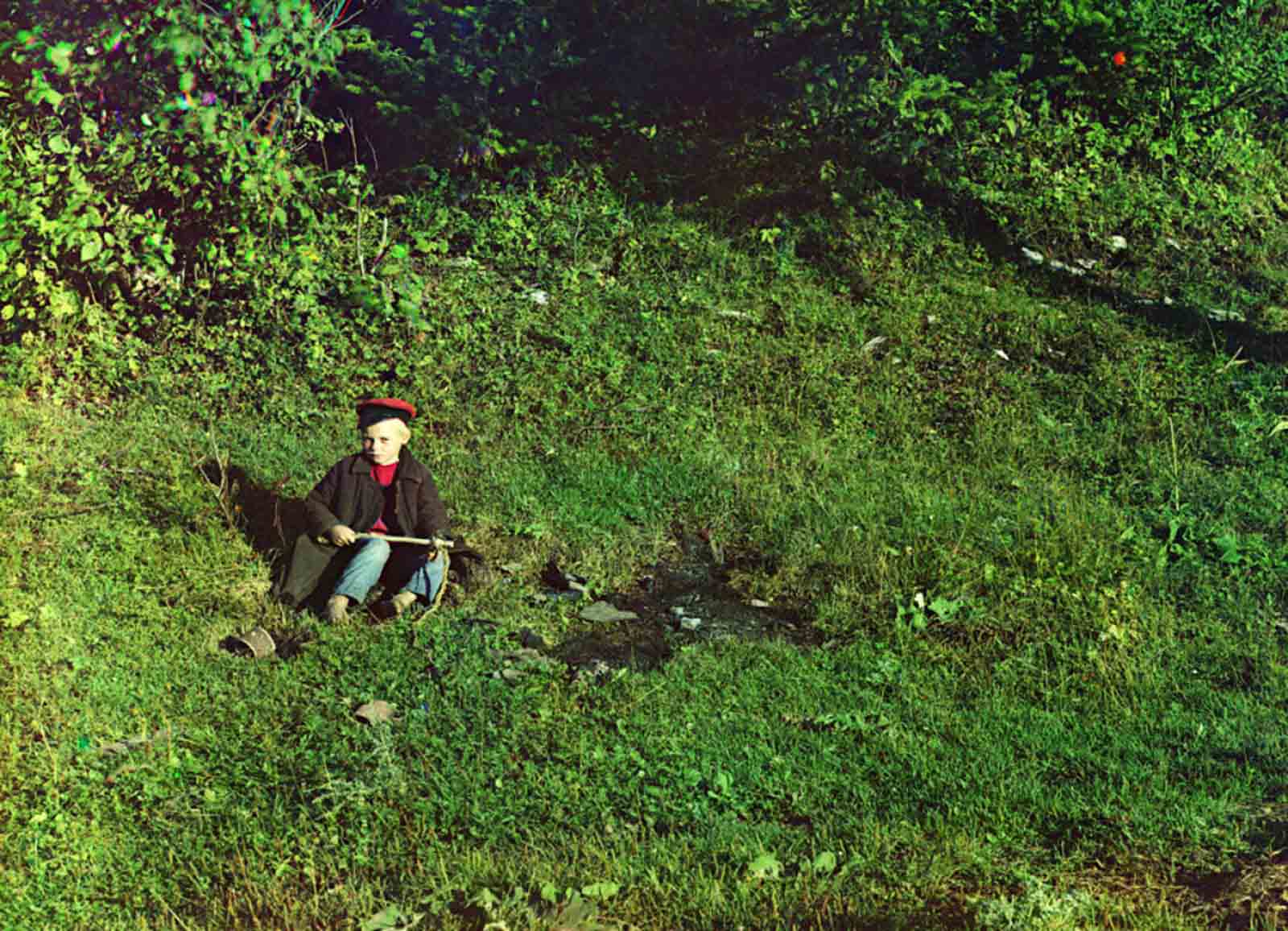
On the Sim River, a shepherd boy. Photo was taken in 1910, from the album “Views in the Ural Mountains, a survey of an industrial area, Russian Empire”.

Alternators made in Budapest, Hungary, in the power generating hall of a hydroelectric station in Iolotan (Eloten), Turkmenistan, on the Murghab River, ca. 1910.

A Georgian woman poses for a photograph, ca. 1910.

A group of women in Dagestan, ca. 1910.
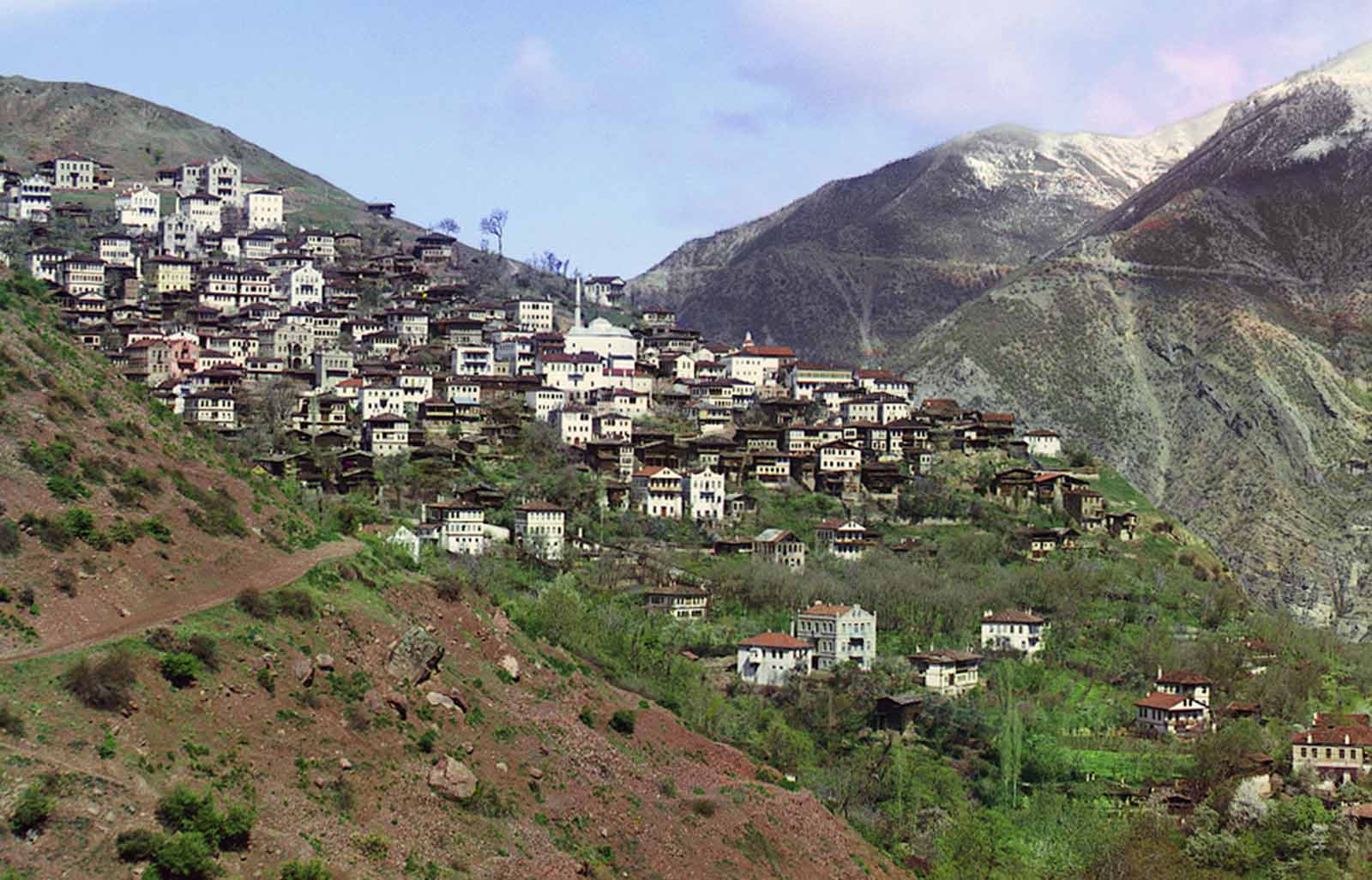
General view of Artvin (now in Turkey) from the small town of Svet, ca. 1910.

Pinkhus Karlinskii, eighty-four years old with sixty-six years of service. Supervisor of Chernigov floodgate, part of the Mariinskii Canal system. Photo was taken in 1909.
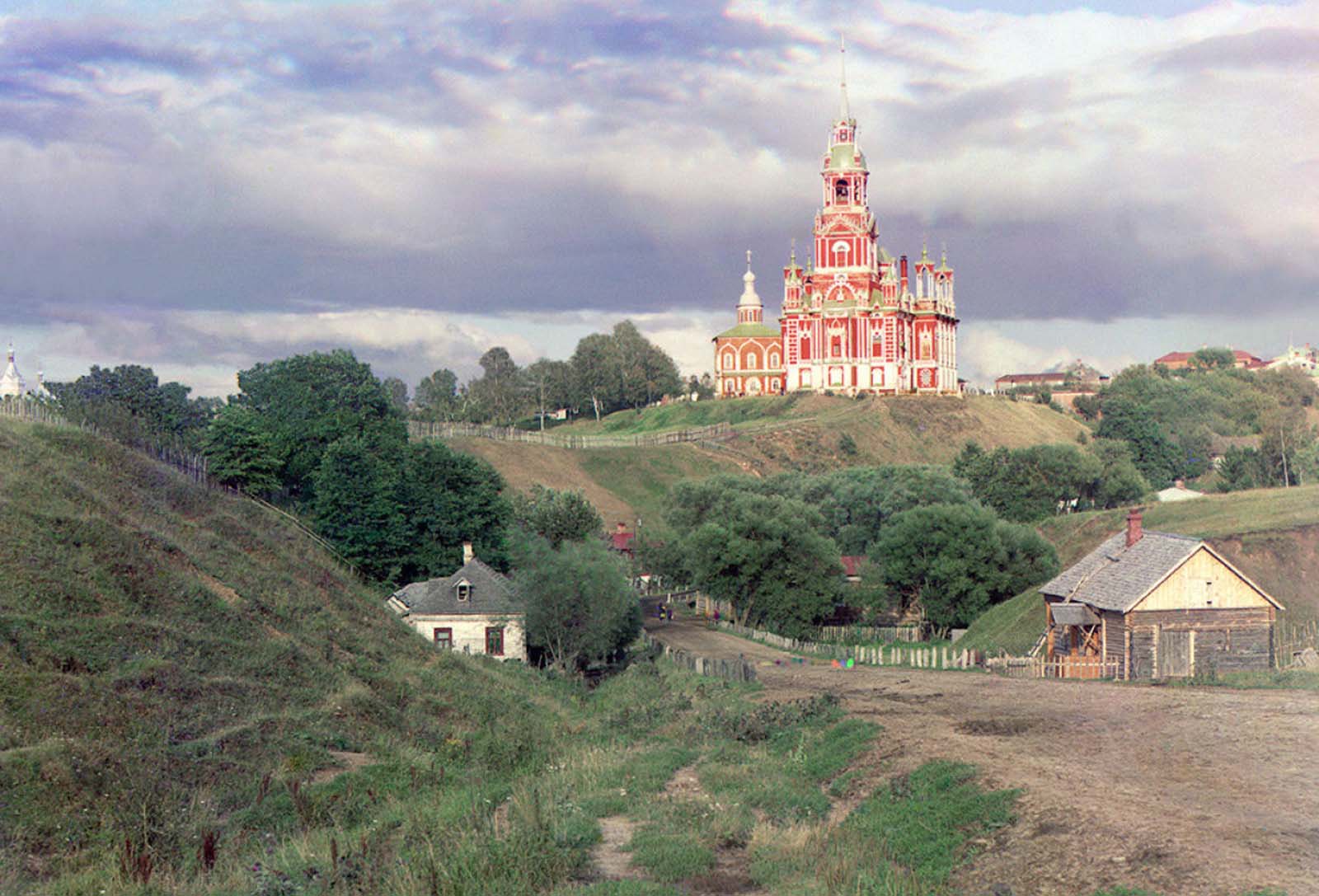
General view of the Nikolaevskii Cathedral from the southwest in Mozhaisk in 1911.

A group of Jewish children with a teacher in Samarkand, (in modern Uzbekistan), ca. 1910.

A switch operator poses on the Trans-Siberian Railroad, near the town of Ust Katav on the Yuryuzan River in 1910.
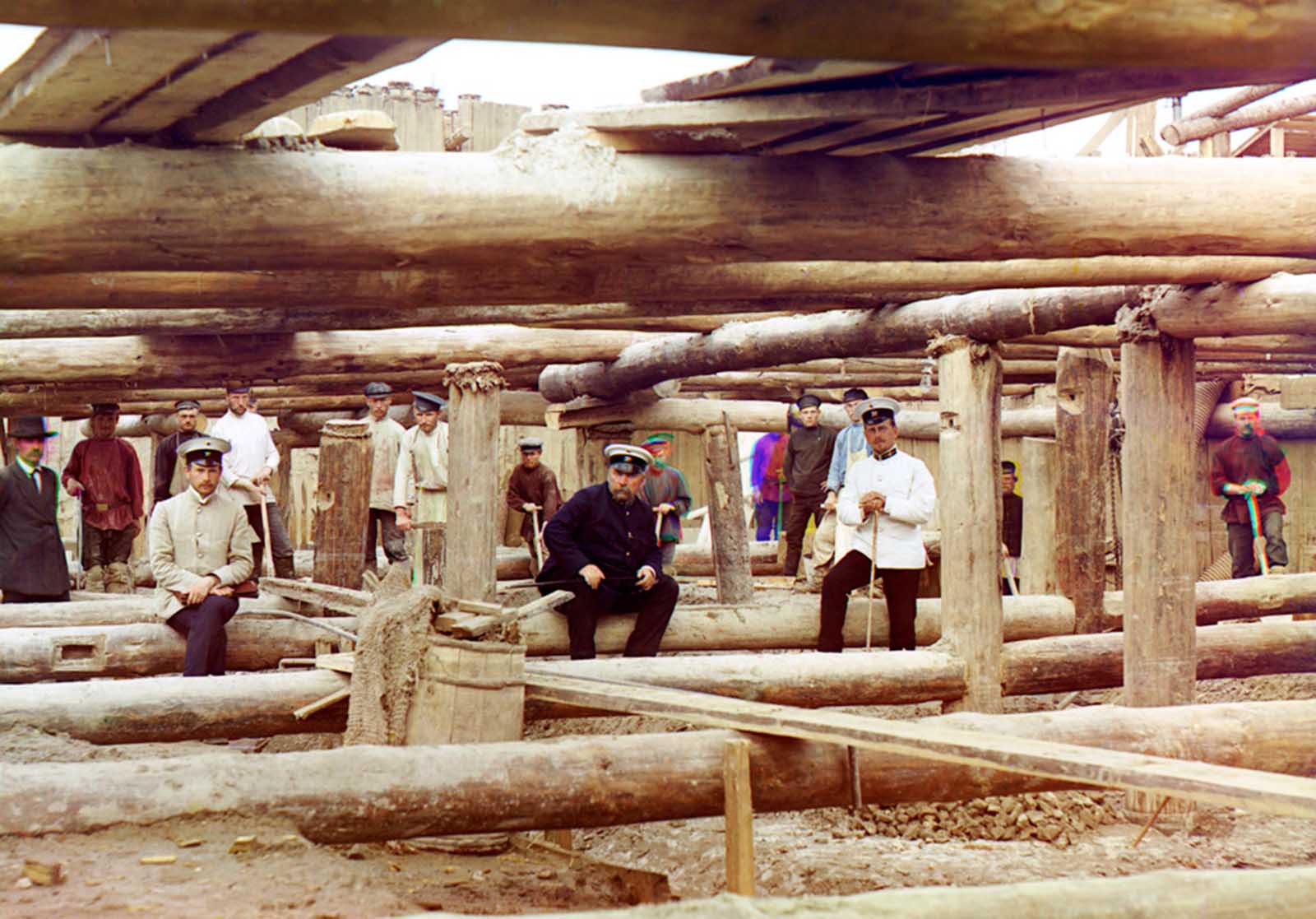
Laying concrete for the dam’s sluice, 1912. Workers and supervisors pose for a photograph amid preparations for pouring cement for the sluice dam foundation across the Oka River near Beloomut.

Sart woman in purdah in Samarkand, Uzbekistan, ca. 1910. Until the Russian revolution of 1917, “Sart” was the name for Uzbeks living in Kazakhstan

General view of the wharf at Mezhevaya Utka, 1912.

Peasants harvesting hay in 1909. From the album “Views along the Mariinskii Canal and river system, Russian Empire”.
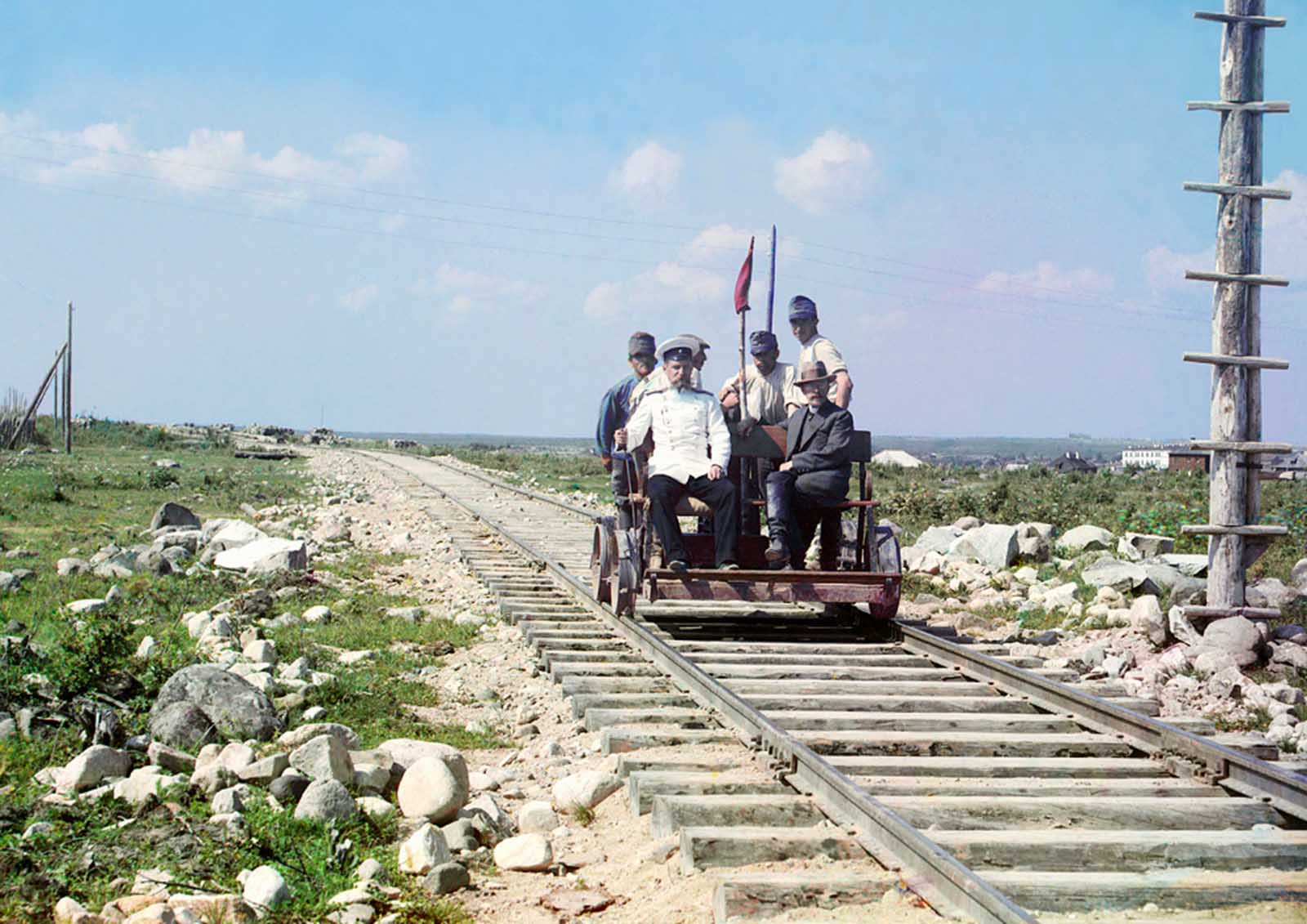
Prokudin-Gorskii rides along on a handcar outside Petrozavodsk on the Murmansk railway along Lake Onega near Petrozavodsk in 1910.
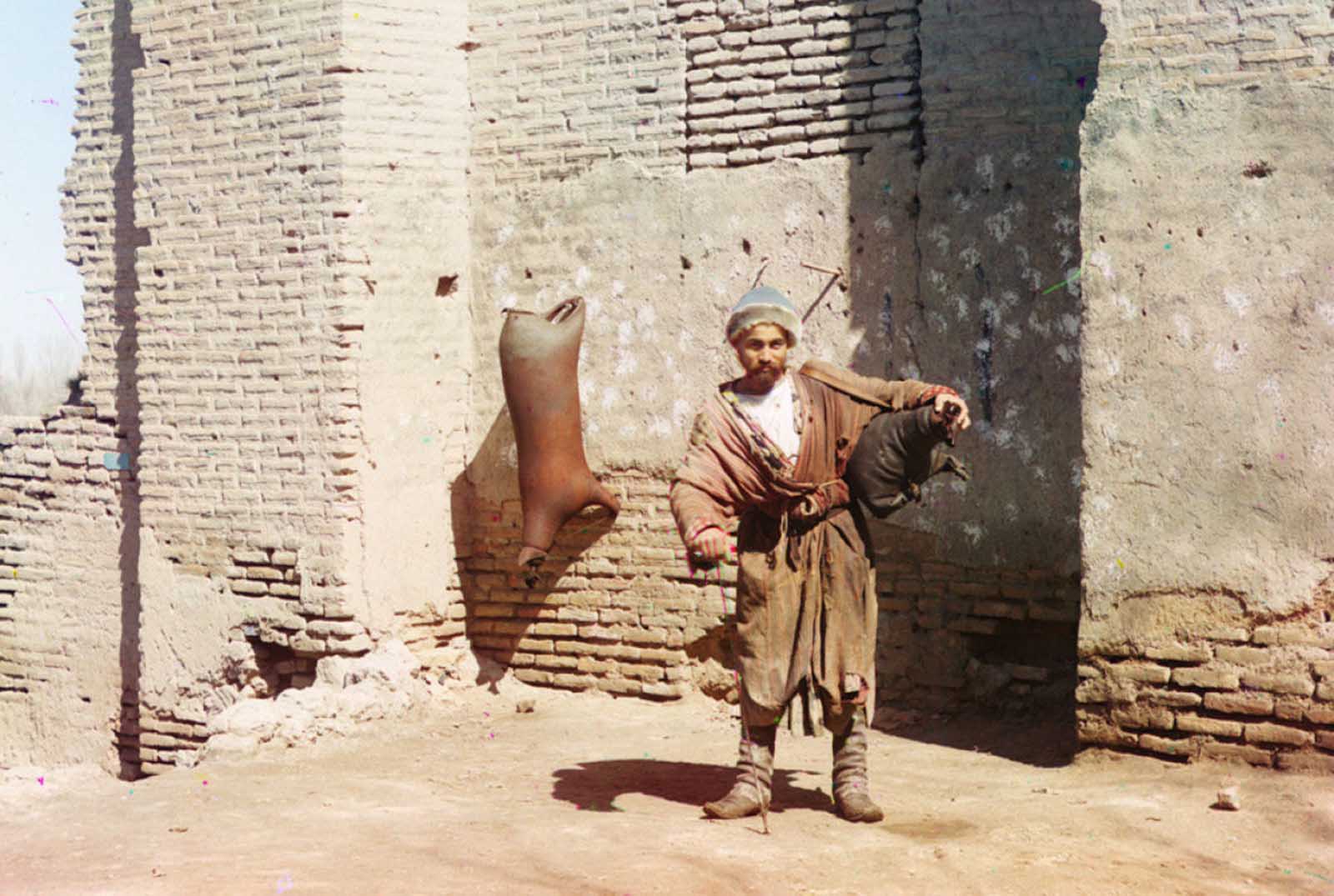
A water-carrier in Samarkand (present-day Uzbekistan), ca. 1910.
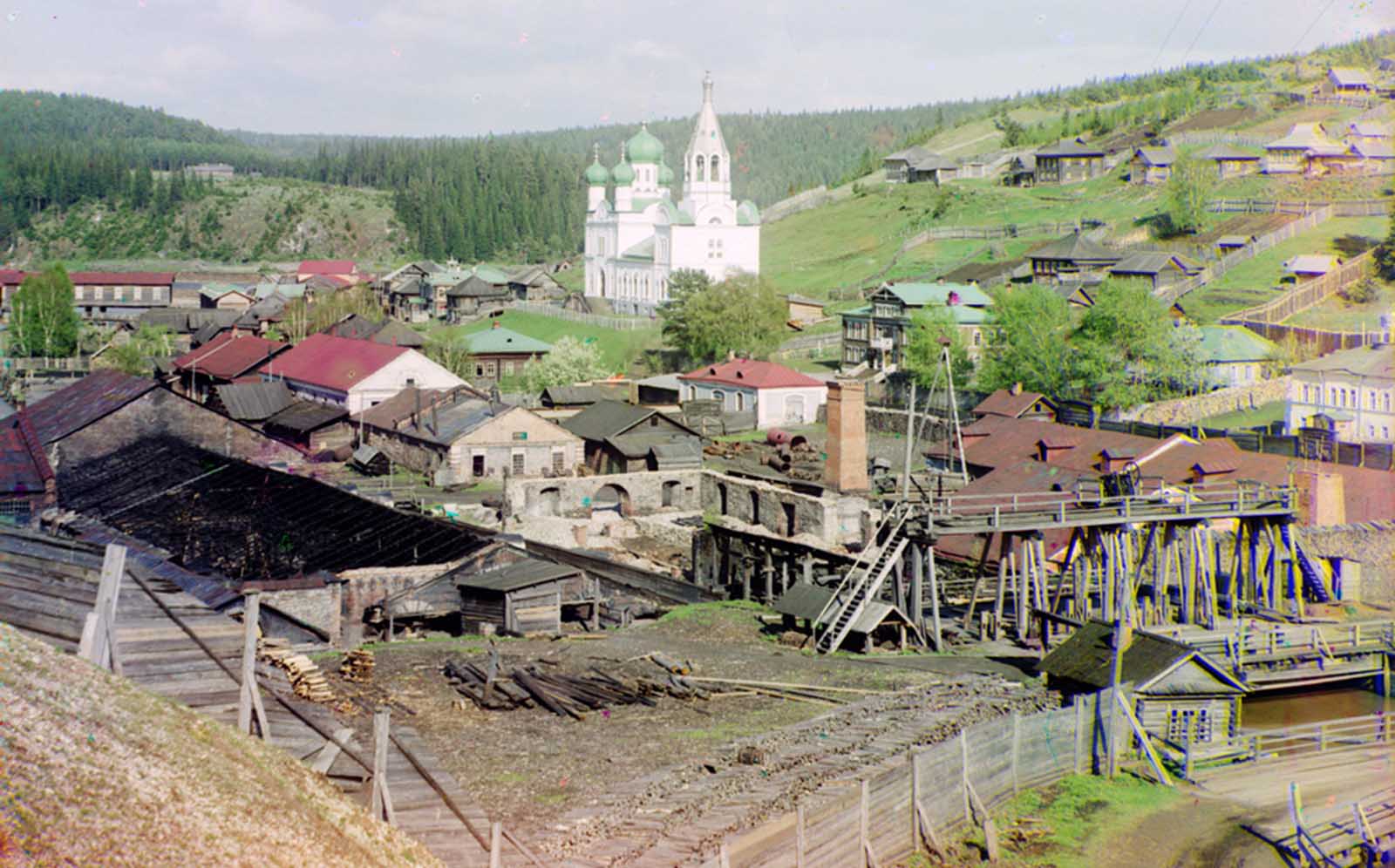
Factory in Kyn, Russia, belonging to Count S.A. Stroganov, 1912.
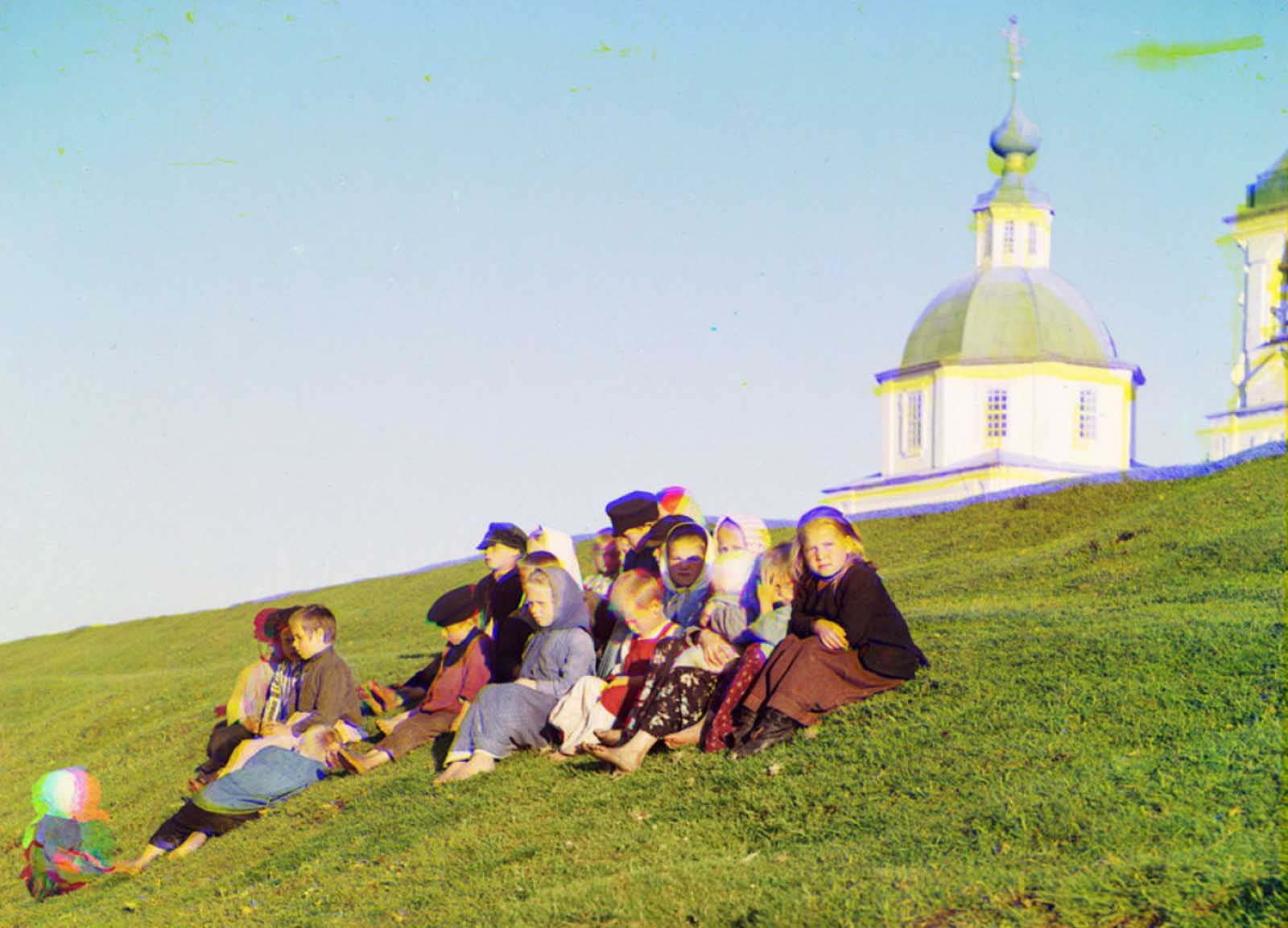
Russian children sit on the side of a hill near a church and bell tower near White Lake, in Russia, 1909.

Emir Seyyid Mir Mohammed Alim Khan, the Emir of Bukhara, seated holding a sword in Bukhara, (present-day Uzbekistan), ca. 1910.

A boy leans on a wooden gatepost in 1910. From the album “Views in the Ural Mountains, a survey of an industrial area, Russian Empire”.

A metal truss bridge on stone piers, part of the Trans-Siberian Railway, crossing the Kama River near Perm, Ural Mountains Region, ca. 1910.
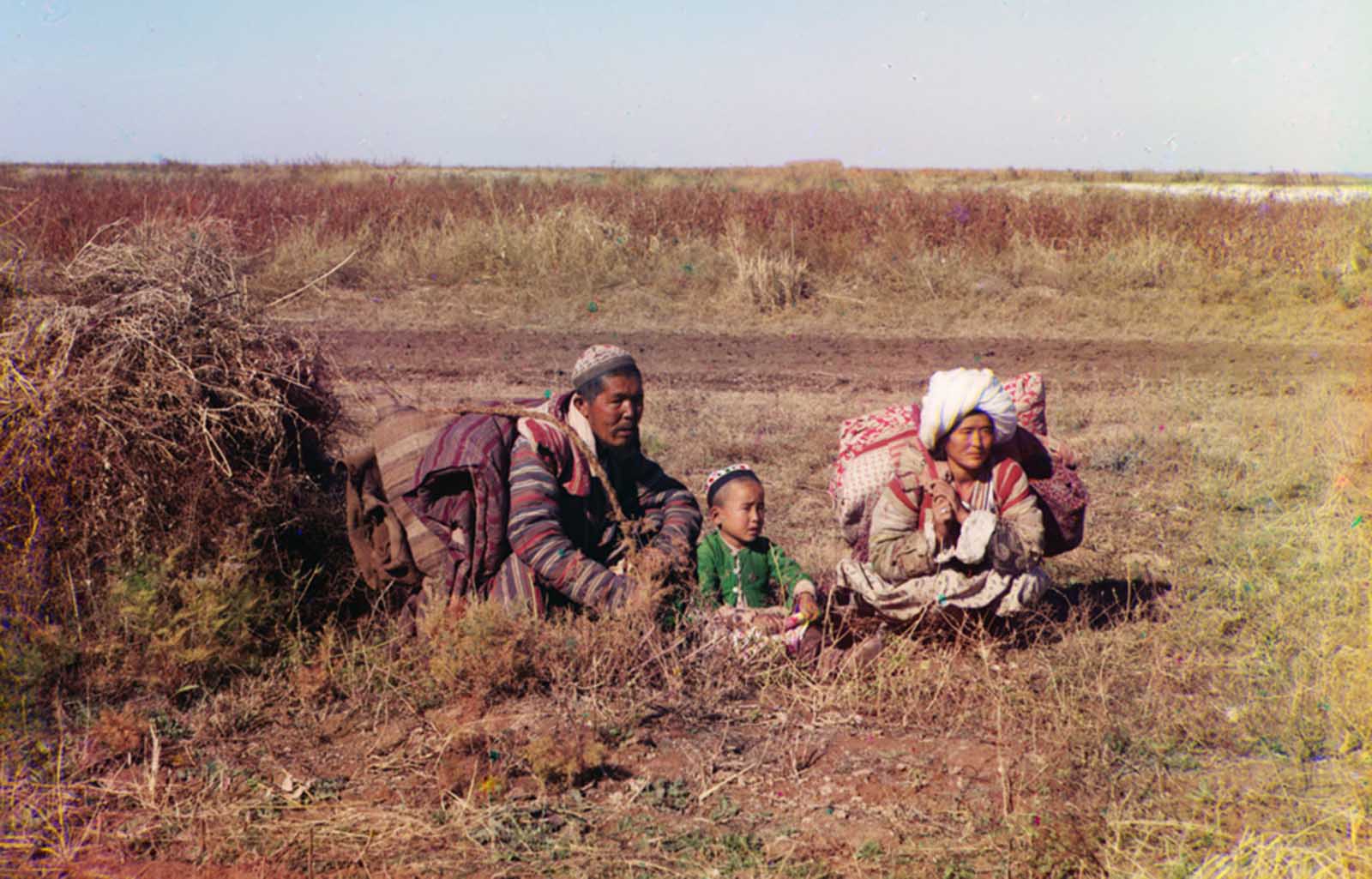
Nomadic Kirghiz on the Golodnaia Steppe in present-day Uzbekistan and Kazakhstan, ca. 1910.

A man and woman pose in Dagestan, ca. 1910.
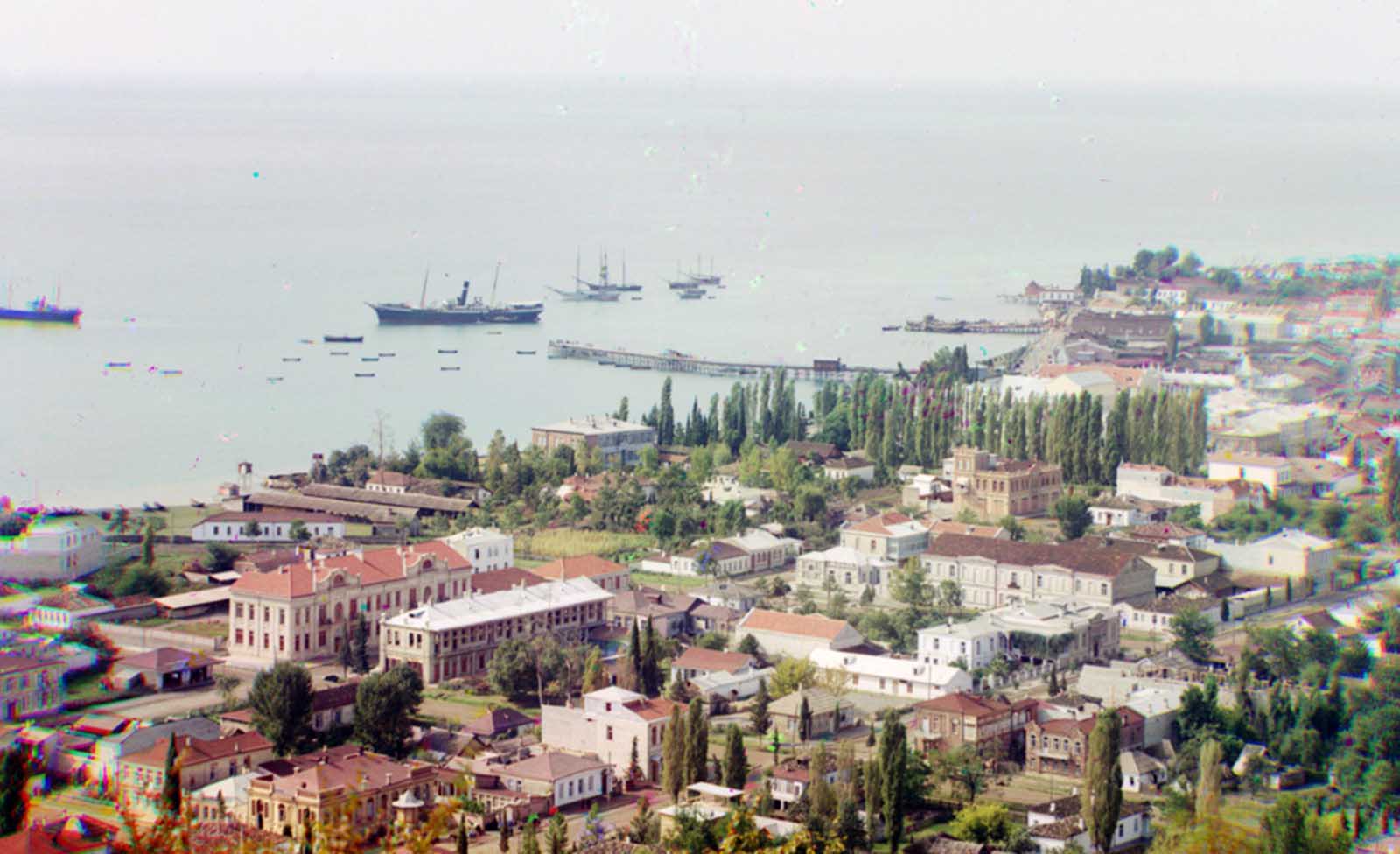
A general view of Sukhumi, Abkhazia and its bay, seen sometime around 1910 from Cherniavskii Mountain.

A boy sits in the court of Tillia-Kari mosque in Samarkand, present-day Uzbekistan, ca. 1910.
(Photo credit: Library of Congress).